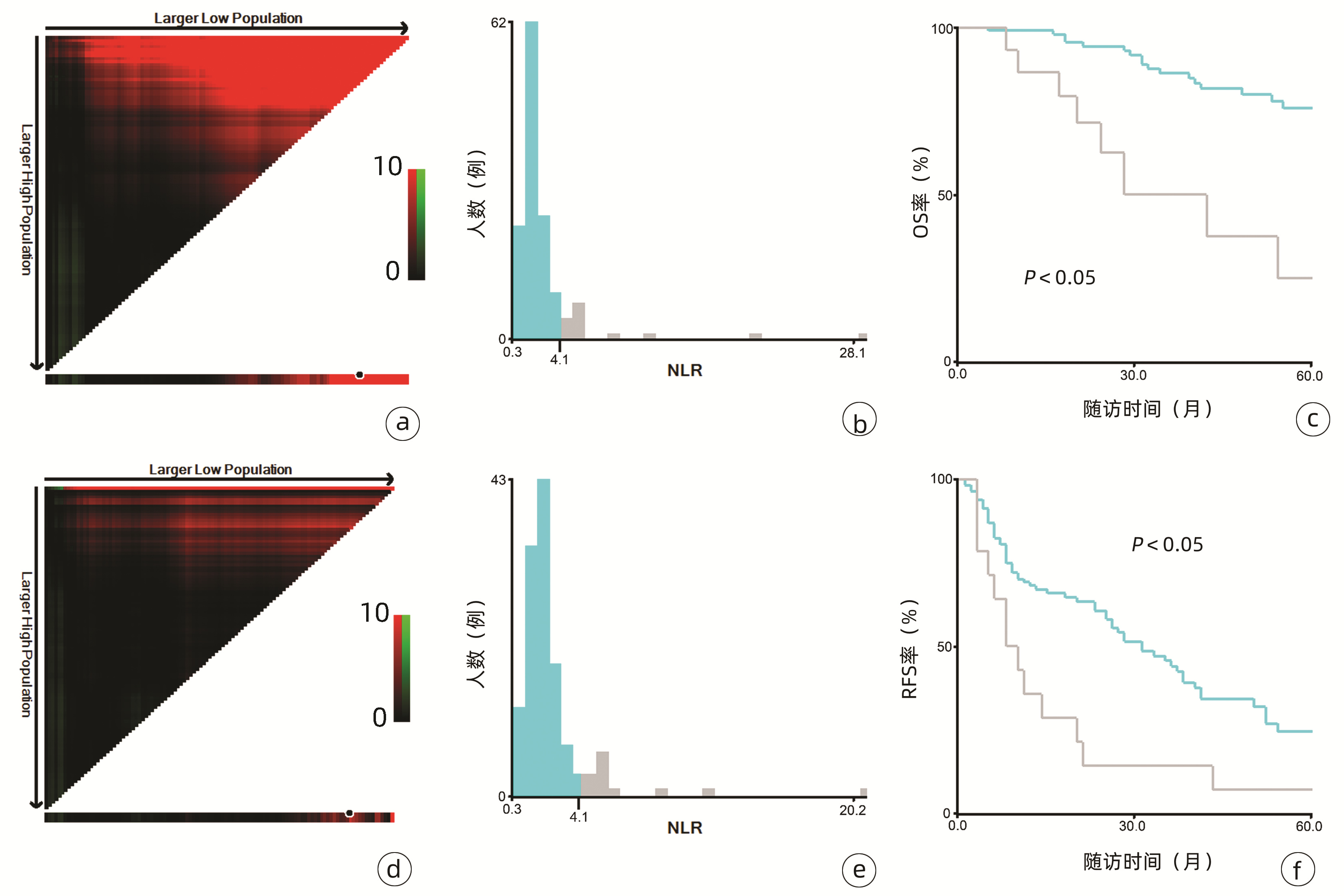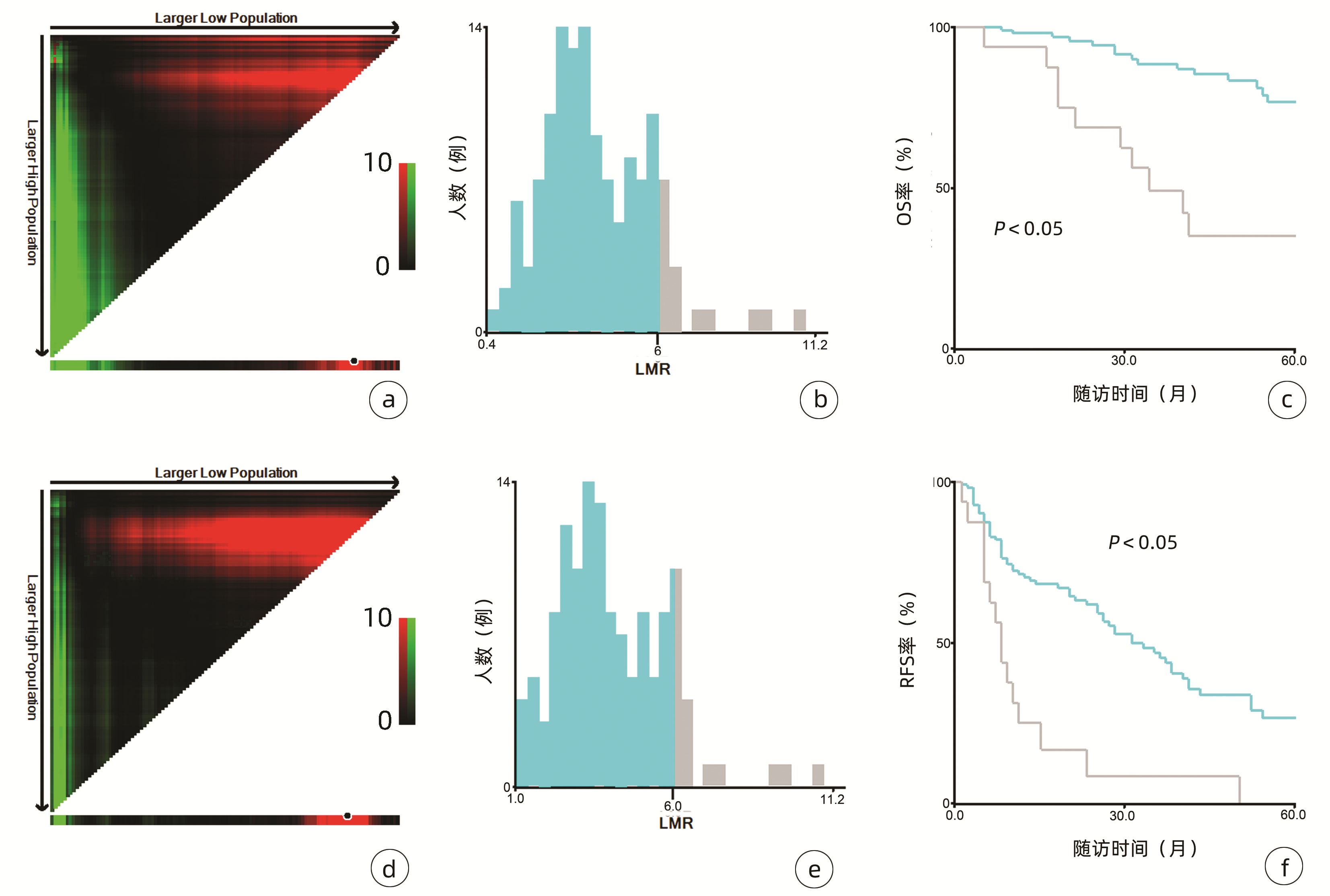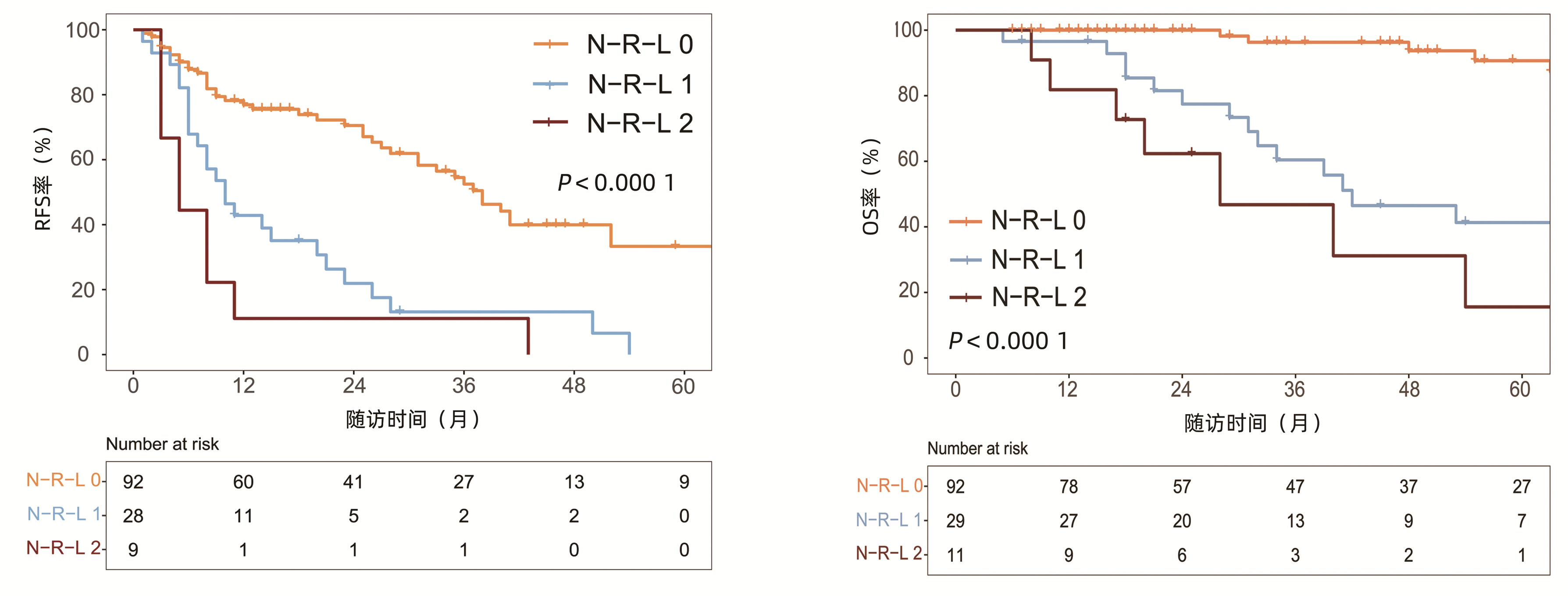| [1] |
DASARI A, SHEN C, HALPERIN D, et al. Trends in the incidence, prevalence, and survival outcomes in patients with neuroendocrine tumors in the United States[J]. JAMA Oncol, 2017, 3(10): 1335-1342. DOI: 10.1001/jamaoncol.2017.0589. |
| [2] |
BUICKO JL, FINNERTY BM, ZHANG T, et al. Insights into the biology and treatment strategies of pancreatic neuroendocrine tumors[J]. Ann Pancreat Cancer, 2019, 2: 12. DOI: 10.21037/apc.2019.06.02. |
| [3] |
DA SILVA A, BOWDEN M, ZHANG S, et al. Characterization of the neuroendocrine tumor immune microenvironment[J]. Pancreas, 2018, 47(9): 1123-1129. DOI: 10.1097/MPA.0000000000001150. |
| [4] |
KRUG S, ABBASSI R, GRIESMANN H, et al. Therapeutic targeting of tumor-associated macrophages in pancreatic neuroendocrine tumors[J]. Int J Cancer, 2018, 143(7): 1806-1816. DOI: 10.1002/ijc.31562. |
| [5] |
LIU M, ZHANG Y, CHEN L, et al. Myeloid-derived suppressor cells in gastroenteropancreatic neuroendocrine neoplasms[J]. Endocrine, 2021, 71(1): 242-252. DOI: 10.1007/s12020-020-02467-2. |
| [6] |
CAI L, MICHELAKOS T, DESHPANDE V, et al. Role of tumor-associated macrophages in the clinical course of pancreatic neuroendocrine tumors (PanNETs)[J]. Clin Cancer Res, 2019, 25(8): 2644-2655. DOI: 10.1158/1078-0432.CCR-18-1401. |
| [7] |
RYSCHICH E, AUTSCHBACH F, EISOLD S, et al. Expression of HLA class Ⅰ/Ⅱ antigens and T cell immune response in human neuroendocrine tumors of the pancreas[J]. Tissue Antigens, 2003, 62(1): 48-54. DOI: 10.1034/j.1399-0039.2003.00075.x. |
| [8] |
de HOSSON LD, TAKKENKAMP TJ, KATS-UGURLU G, et al. Neuroendocrine tumours and their microenvironment[J]. Cancer Immunol Immunother, 2020, 69(8): 1449-1459. DOI: 10.1007/s00262-020-02556-1. |
| [9] |
ALLEN E, JABOUILLE A, RIVERA LB, et al. Combined antiangiogenic and anti-PD-L1 therapy stimulates tumor immunity through HEV formation[J]. Sci Transl Med, 2017, 9(385): eaak9679. DOI: 10.1126/scitranslmed.aak9679. |
| [10] |
ZHANG WH, WANG WQ, HAN X, et al. Infiltrating pattern and prognostic value of tertiary lymphoid structures in resected non-functional pancreatic neuroendocrine tumors[J]. J Immunother Cancer, 2020, 8(2): e001188. DOI: 10.1136/jitc-2020-001188. |
| [11] |
XU SS, LI H, LI TJ, et al. Neutrophil extracellular traps and macrophage extracellular traps predict postoperative recurrence in resectable nonfunctional pancreatic neuroendocrine tumors[J]. Front Immunol, 2021, 12: 577517. DOI: 10.3389/fimmu.2021.577517. |
| [12] |
ZHANG WH, WANG WQ, GAO HL, et al. Tumor-infiltrating neutrophils predict poor survival of non-functional pancreatic neuroendocrine tumor[J]. J Clin Endocrinol Metab, 2020, 105(7): dgaa196. DOI: 10.1210/clinem/dgaa196. |
| [13] |
DEBIEN V, DAVIDSON G, BALTZINGER P, et al. Involvement of Neutrophils in Metastatic Evolution of Pancreatic Neuroendocrine Tumors[J]. Cancers (Basel), 2021, 13(11): 2771. DOI: 10.3390/cancers13112771. |
| [14] |
HARNEY AS, KARAGIANNIS GS, PIGNATELLI J, et al. The selective Tie2 inhibitor rebastinib blocks recruitment and function of Tie2Hi macrophages in breast cancer and pancreatic neuroendocrine tumors[J]. Mol Cancer Ther, 2017, 16(11): 2486-2501. DOI: 10.1158/1535-7163.MCT-17-0241. |
| [15] |
AKKARI L, GOCHEVA V, KESTER JC, et al. Distinct functions of macrophage-derived and cancer cell-derived cathepsin Z combine to promote tumor malignancy via interactions with the extracellular matrix[J]. Genes Dev, 2014, 28(19): 2134-2150. DOI: 10.1101/gad.249599.114. |
| [16] |
BEAUCHAMP RD, COFFEY RJ Jr, LYONS RM, et al. Human carcinoid cell production of paracrine growth factors that can stimulate fibroblast and endothelial cell growth[J]. Cancer Res, 1991, 51(19): 5253-5260.
|
| [17] |
MARIATHASAN S, TURLEY SJ, NICKLES D, et al. TGFβ attenuates tumour response to PD-L1 blockade by contributing to exclusion of T cells[J]. Nature, 2018, 554(7693): 544-548. DOI: 10.1038/nature25501. |
| [18] |
SVEJDA B, KIDD M, GIOVINAZZO F, et al. The 5-HT(2B) receptor plays a key regulatory role in both neuroendocrine tumor cell proliferation and the modulation of the fibroblast component of the neoplastic microenvironment[J]. Cancer, 2010, 116(12): 2902-2912. DOI: 10.1002/cncr.25049. |
| [19] |
CUNY T, van KOETSVELD PM, MONDIELLI G, et al. Reciprocal interactions between fibroblast and pancreatic neuroendocrine tumor cells: putative impact of the tumor microenvironment[J]. Cancers (Basel), 2022, 14(14): 3481. DOI: 10.3390/cancers14143481. |
| [20] |
KATZ SC, DONKOR C, GLASGOW K, et al. T cell infiltrate and outcome following resection of intermediate-grade primary neuroendocrine tumours and liver metastases[J]. HPB (Oxford), 2010, 12(10): 674-683. DOI: 10.1111/j.1477-2574.2010.00231.x. |
| [21] |
KIM ST, HA SY, LEE S, et al. The impact of PD-L1 expression in patients with metastatic GEP-NETs[J]. J Cancer, 2016, 7(5): 484-489. DOI: 10.7150/jca.13711. |
| [22] |
de REUVER PR, MEHTA S, GILL P, et al. Immunoregulatory forkhead box protein p3-positive lymphocytes are associated with overall survival in patients with pancreatic neuroendocrine tumors[J]. J Am Coll Surg, 2016, 222(3): 281-287. DOI: 10.1016/j.jamcollsurg.2015.12.008. |
| [23] |
KOMI D, REDEGELD FA. Role of mast cells in shaping the tumor microenvironment[J]. Clin Rev Allergy Immunol, 2020, 58(3): 313-325. DOI: 10.1007/s12016-019-08753-w. |
| [24] |
SOUCEK L, BUGGY JJ, KORTLEVER R, et al. Modeling pharmacological inhibition of mast cell degranulation as a therapy for insulinoma[J]. Neoplasia, 2011, 13(11): 1093-1100. DOI: 10.1593/neo.11980. |
| [25] |
MO S, ZONG L, CHEN X, et al. High mast cell density predicts a favorable prognosis in patients with pancreatic neuroendocrine neoplasms[J]. Neuroendocrinology, 2022, 112(9): 845-855. DOI: 10.1159/000521651. |
| [26] |
NABA A, CLAUSER KR, MANI DR, et al. Quantitative proteomic profiling of the extracellular matrix of pancreatic islets during the angiogenic switch and insulinoma progression[J]. Sci Rep, 2017, 7: 40495. DOI: 10.1038/srep40495. |
| [27] |
GUADAGNO E, CAMPIONE S, PIGNATIELLO S, et al. Epithelial-mesenchymal transition proteins in neuroendocrine neoplasms: differential immunohistochemical expression in different sites and correlation with clinico-pathological features[J]. Diagnostics (Basel), 2020, 10(6): 351. DOI: 10.3390/diagnostics10060351. |
| [28] |
JOYCE JA, FREEMAN C, MEYER-MORSE N, et al. A functional heparan sulfate mimetic implicates both heparanase and heparan sulfate in tumor angiogenesis and invasion in a mouse model of multistage cancer[J]. Oncogene, 2005, 24(25): 4037-4051. DOI: 10.1038/sj.onc.1208602. |
| [29] |
HUNTER KE, PALERMO C, KESTER JC, et al. Heparanase promotes lymphangiogenesis and tumor invasion in pancreatic neuroendocrine tumors[J]. Oncogene, 2014, 33(14): 1799-1808. DOI: 10.1038/onc.2013.142. |
| [30] |
JIAO H, ZENG L, ZHANG J, et al. THBS2, a microRNA-744-5p target, modulates MMP9 expression through CUX1 in pancreatic neuroendocrine tumors[J]. Oncol Lett, 2020, 19(3): 1683-1692. DOI: 10.3892/ol.2020.11273. |
| [31] |
SHCHORS K, NOZAWA H, XU J, et al. Increased invasiveness of MMP-9-deficient tumors in two mouse models of neuroendocrine tumorigenesis[J]. Oncogene, 2013, 32(4): 502-513. DOI: 10.1038/onc.2012.60. |
| [32] |
CARRASCO P, ZUAZO-GAZTELU I, CASANOVAS O. Sprouting strategies and dead ends in anti-angiogenic targeting of NETs[J]. J Mol Endocrinol, 2017, 59(1): R77-R91. DOI: 10.1530/JME-17-0029. |
| [33] |
CUNY T, de HERDER W, BARLIER A, et al. Role of the tumor microenvironment in digestive neuroendocrine tumors[J]. Endocr Relat Cancer, 2018, 25(11): R519-R544. DOI: 10.1530/ERC-18-0025. |
| [34] |
KEKLIKOGLOU I, KADIOGLU E, BISSINGER S, et al. Periostin limits tumor response to VEGFA inhibition[J]. Cell Rep, 2018, 22(10): 2530-2540. DOI: 10.1016/j.celrep.2018.02.035. |
| [35] |
ALLEN E, WALTERS IB, HANAHAN D. Brivanib, a dual FGF/VEGF inhibitor, is active both first and second line against mouse pancreatic neuroendocrine tumors developing adaptive/evasive resistance to VEGF inhibition[J]. Clin Cancer Res, 2011, 17(16): 5299-5310. DOI: 10.1158/1078-0432.CCR-10-2847. |
| [36] |
SONCINI M, CORNA G, MORESCO M, et al. 24-Hydroxycholesterol participates in pancreatic neuroendocrine tumor development[J]. Proc Natl Acad Sci USA, 2016, 113(41): E6219-E6227. DOI: 10.1073/pnas.1613332113. |
| [37] |
XU J, SHEN L, BAI C, et al. Surufatinib in advanced pancreatic neuroendocrine tumours (SANET-p): a randomised, double-blind, placebo-controlled, phase 3 study[J]. Lancet Oncol, 2020, 21(11): 1489-1499. DOI: 10.1016/S1470-2045(20)30493-9. |
| [38] |
CAPDEVILA J, FAZIO N, LOPEZ C, et al. Lenvatinib in patients with advanced grade 1/2 pancreatic and gastrointestinal neuroendocrine tumors: results of the phase Ⅱ TALENT trial (GETNE1509)[J]. J Clin Oncol, 2021, 39(20): 2304-2312. DOI: 10.1200/JCO.20.03368. |
| [39] |
KULKE MH, OU FS, NIEDZWIECKI D, et al. Everolimus with or without bevacizumab in advanced pNET: CALGB 80701 (Alliance)[J]. Endocr Relat Cancer, 2022, 29(6): 335-344. DOI: 10.1530/ERC-21-0239. |
| [40] |
GRANDE E, RODRIGUEZ-ANTONA C, LÓPEZ C, et al. Sunitinib and evofosfamide (TH-302) in systemic treatment-naïve patients with grade 1/2 metastatic pancreatic neuroendocrine tumors: The GETNE-1408 trial[J]. Oncologist, 2021, 26(11): 941-949. DOI: 10.1002/onco.13885. |
| [41] |
AL-TOUBAH T, SCHELL MJ, CIVES M, et al. A phase Ⅱ study of ibrutinib in advanced neuroendocrine neoplasms[J]. Neuroendocrinology, 2020, 110(5): 377-383. DOI: 10.1159/000502383. |
| [42] |
MEHNERT JM, BERGSLAND E, O'NEIL BH, et al. Pembrolizumab for the treatment of programmed death-ligand 1-positive advanced carcinoid or pancreatic neuroendocrine tumors: Results from the KEYNOTE-028 study[J]. Cancer, 2020, 126(13): 3021-3030. DOI: 10.1002/cncr.32883. |
| [43] |
YAO JC, STROSBERG J, FAZIO N, et al. Spartalizumab in metastatic, well/poorly-differentiated neuroendocrine neoplasms[J]. Endocr Relat Cancer, 2021. DOI: 10.1530/ERC-20-0382.[Online ahead of print] |
| [44] |
KLEIN O, KEE D, MARKMAN B, et al. Immunotherapy of ipilimumab and nivolumab in patients with advanced neuroendocrine tumors: a subgroup analysis of the CA209-538 clinical trial for rare cancers[J]. Clin Cancer Res, 2020, 26(17): 4454-4459. DOI: 10.1158/1078-0432.CCR-20-0621. |
| [45] |
INOUE M, KIM M, INOUE T, et al. Oncolytic vaccinia virus injected intravenously sensitizes pancreatic neuroendocrine tumors and metastases to immune checkpoint blockade[J]. Mol Ther Oncolytics, 2022, 24: 299-318. DOI: 10.1016/j.omto.2021.12.016. |
| [46] |
KAEMMERER D, PETER L, LUPP A, et al. Molecular imaging with 68Ga-SSTR PET/CT and correlation to immunohistochemistry of somatostatin receptors in neuroendocrine tumours[J]. Eur J Nucl Med Mol Imaging, 2011, 38(9): 1659-1668. DOI: 10.1007/s00259-011-1846-5. |
| [47] |
MANDRIANI B, PELLÈ E, MANNAVOLA F, et al. Development of anti-somatostatin receptors CAR T cells for treatment of neuroendocrine tumors[J]. J Immunother Cancer, 2022, 10(6): e004854. DOI: 10.1136/jitc-2022-004854. |
| [48] |
FENG Z, HE X, ZHANG X, et al. Potent suppression of neuroendocrine tumors and gastrointestinal cancers by CDH17CAR T cells without toxicity to normal tissues[J]. Nat Cancer, 2022, 3(5): 581-594. DOI: 10.1038/s43018-022-00344-7. |









 下载:
下载:




 本站查看
本站查看




 DownLoad:
DownLoad: